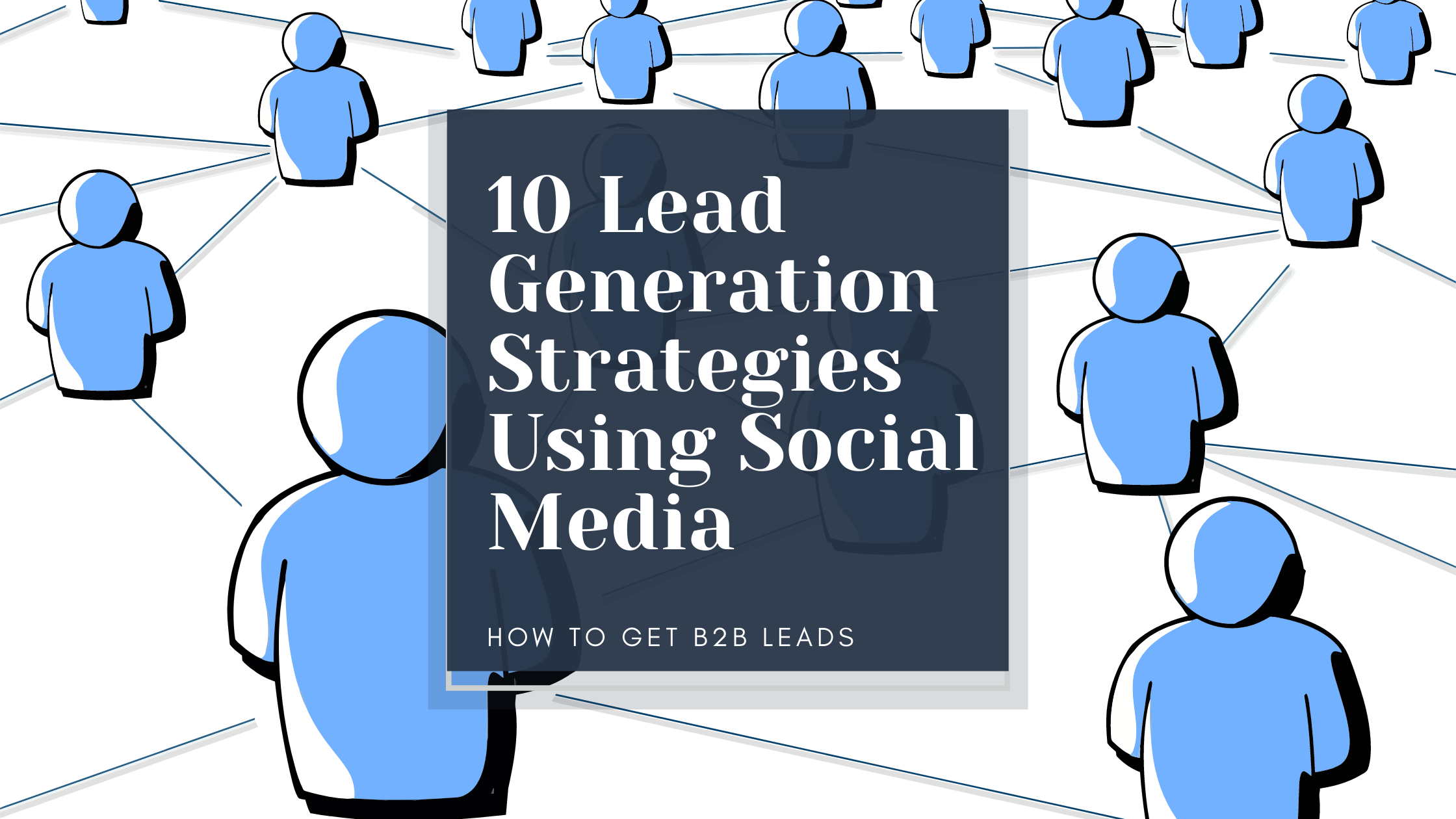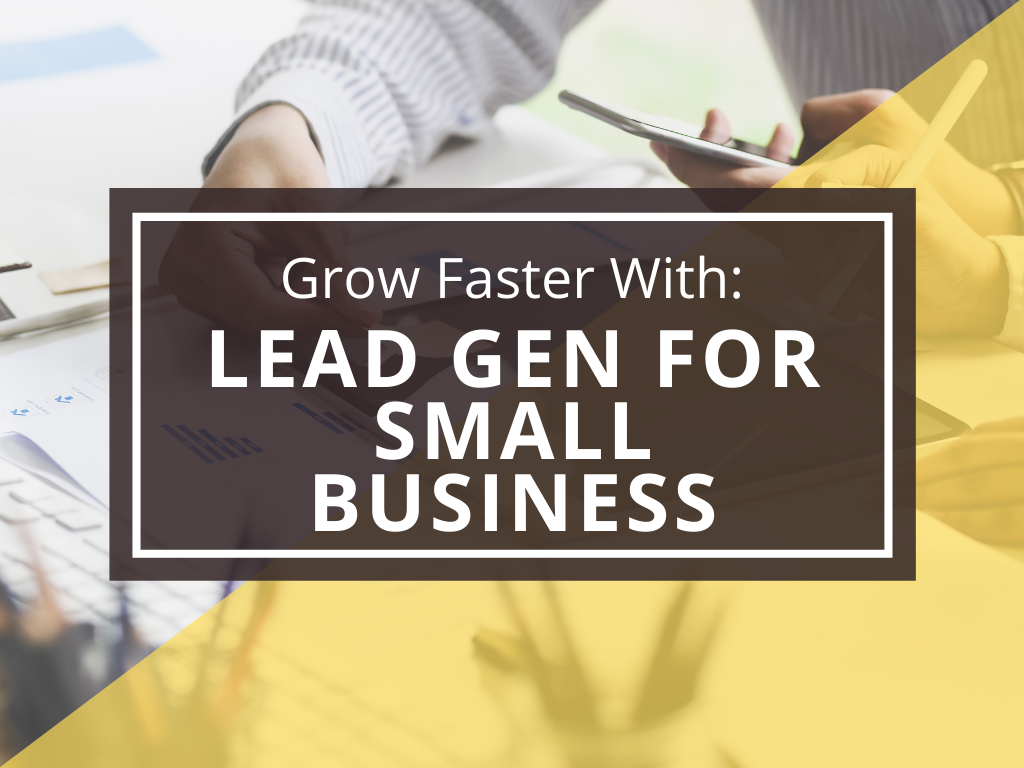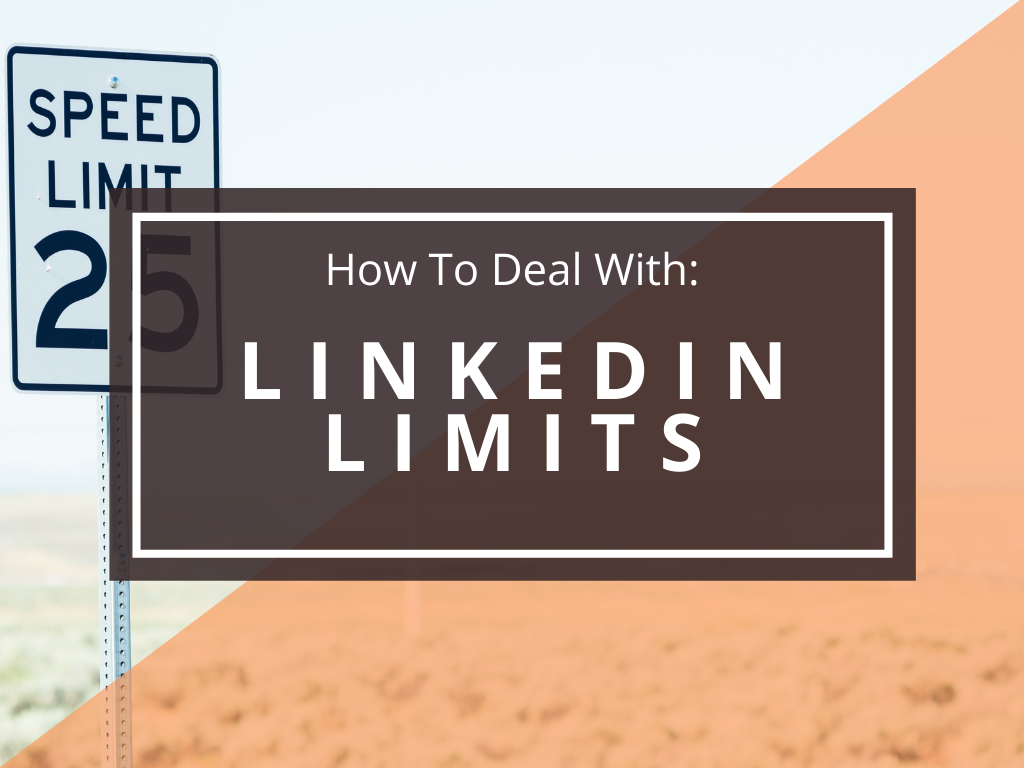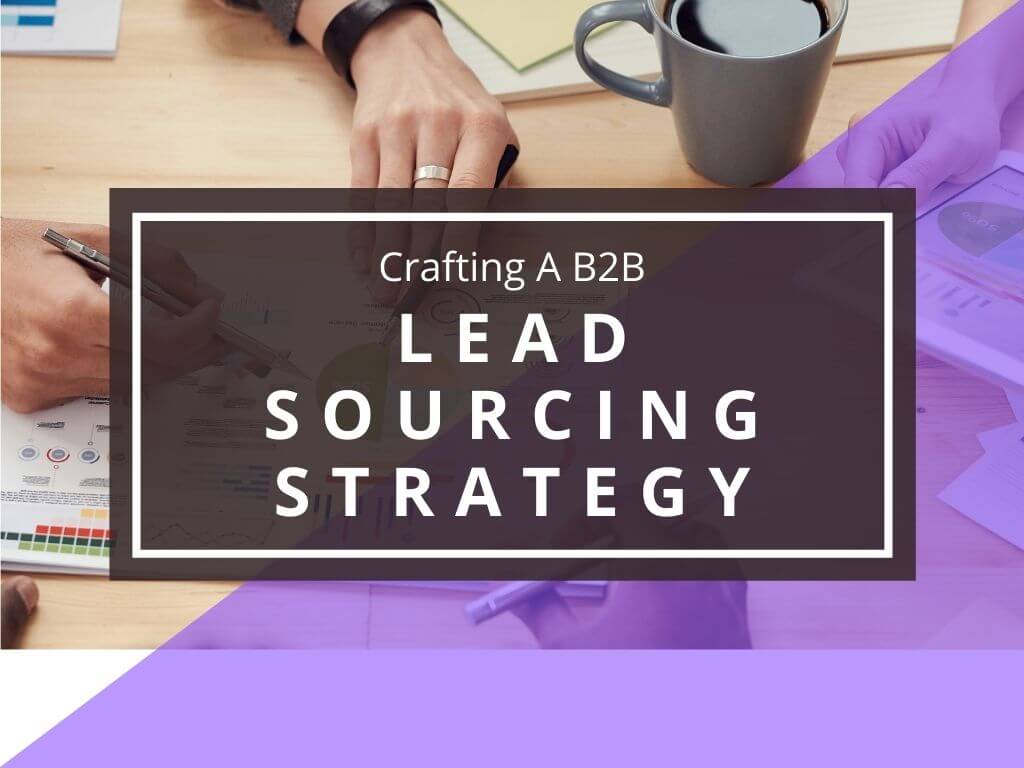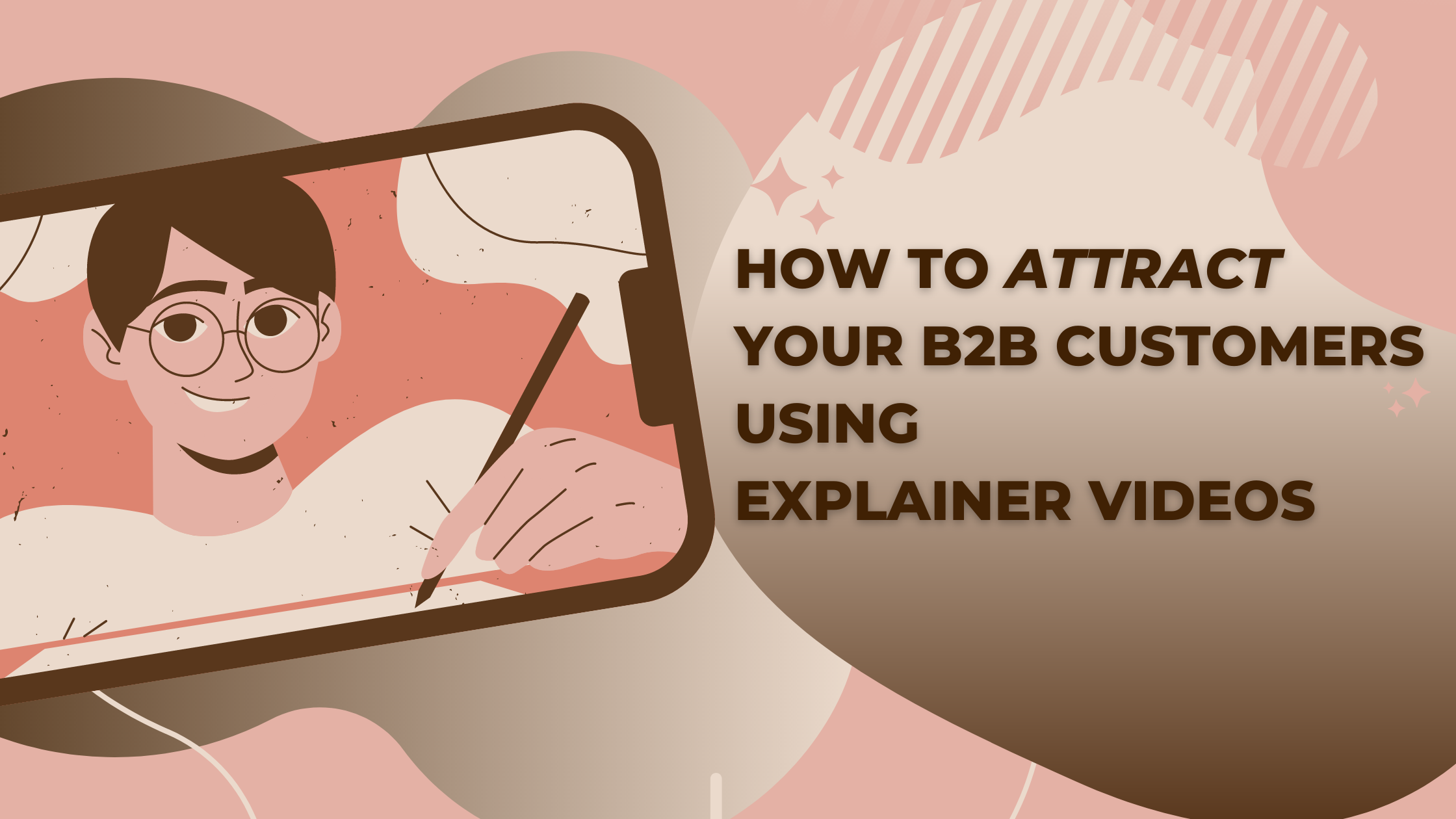Lead generation is a crucial part of any company’s growth strategy. You can fill your pipeline with qualified B2B leads and exponentially grow your business with the right strategies.

The challenges tech companies face in generating leads
The biggest challenge technology companies have when it comes to generating leads is that their products are complex. Potential buyers may have a hard time seeing the value in what they’re selling.
As a tech company, it’s important to simplify your product and make it more appealing to potential customers, but you also need an outreach strategy that works.
Why tech companies should do outbound marketing
Outbound marketing is one of the most efficient ways to reach out to new customers, which is why IT firms shouldn’t overlook outbound marketing campaigns.
Basically, outbound marketing is using different channels like email, phone, or social media to reach out to potential buyers. It’s a way of reaching out to them directly and communicating the value of your product in a way that makes sense to them.
Outbound marketing also allows tech companies to build relationships with potential buyers. If people get to know your company and its products, they’re more likely to buy from you when the time is right. But before we go outbound, let’s find out who your ideal customer is.
Determining your ideal customer profile – Who are your ideal customers?

The first step in any b2b lead generation strategy is to define your ideal customer profile.
- – Who exactly is your target market?
- – What are their challenges?
- – What are their needs?
- – What are their interests?
Once you have a clear understanding of who your ideal customer is, you can begin to tailor your marketing and sales efforts specifically to them.
Problem: In many organizations, the ideal customer is not clearly defined at a granular level
When you do not have a clear picture of your ideal customer, it means you have no way to tailor your marketing and sales efforts to them specifically.
If you don’t have this information, you’ll be sending the wrong message to the wrong people. It’s important as a tech company to define your ideal customer profile so you can focus your marketing efforts on the right people.
I am sure that your product is not for “anyone and everyone” – at least you should not market it that way
It’s not uncommon for technology companies to market their products to “everyone and anyone” in the hope of attracting more customers. However, this approach is often ineffective and can actually be detrimental to the reputation of the company in the long run.
It’s a fact that when you market to “anyone and everyone” within a niche you’re sending out the message that your products are for everyone and that you are not specialized in anything.
Potential buyers may struggle to see the value in what you are selling. Moreover, it can also affect the word-of-mouth marketing of the company negatively.
When it comes to potential buyers, it is more likely that they will buy from a business that specializes in something and clearly communicates how it will solve their specific problem in an innovative and unique way.
Defining your key prospects is important, but once you’ve identified them and matched your solution with their challenges, needs, and interests, don’t stop there. Consider broadening your targeting scope to include prospects outside of your pre-defined borders.
The following are some reasons why tech companies need to consider multiple ideal customers in addition to the obvious ones
While you should tailor your lead generation to your ideal customer, don’t forget about other potential customers who aren’t so obvious.
You should think about a lot of different industries and businesses as potential customers. Target buyers at every stage of the buying process, from those just starting to explore their options to those who already decided what to buy.
One of the biggest risks of overlooking other potential markets is that you’ll miss out on substantial opportunities to increase your lead generation and fill your sales pipeline with interested b2b leads.
Improve your marketing strategy by finding the right B2B leads for your company, and connecting with them in a way that addresses where they are in the buying process.
We can now turn our attention to the level of awareness that your target audience has.

Awareness Stages: The awareness stages of your target audience
When it comes to meeting the needs of your audience, you need to keep in mind that they are at different stages of awareness. This can be broken down into the following stages: unaware, aware, interested, and committed.
Unaware audiences are those who don’t know anything about your product or service. They may have never heard of you before, or they may only know a little bit about what you do. It’s important to target these audiences with introductory content that will introduce them to your product or service.
Aware audiences are those who are aware of your product or service, but aren’t interested in buying it yet.
They may have heard of you and know what you do, but they aren’t convinced that your product is the right fit for them. This is the perfect time to offer a free trial or demo of your product, as well as content that will convince these leads why they should choose you over the competition.
Interested audiences are those who know about you and what you do, but need more information before making a purchase decision. They may have seen some positive reviews online from their friends or on social media, or perhaps they already tried out one of your products for free and want access to another one in order to make an informed buying decision.
It’s important with this audience to provide downloadable resources such as white papers, case studies, ebooks etc., which allows potential customers enough material so that they can learn everything there is to know your business without having contact with a salesperson.
Committed audiences are those who have already purchased your product or service and use it on a regular basis, perhaps even every day. These customers will be the ones talking about you to their friends and family members because they love what you do for them so much. It’s important with this audience that sales teams continue providing top-notch customer support in order to keep these customers happy and coming back for more!

So, how exactly do tech companies generate leads?
You can create leads by creating valuable assets that help your prospects move from where they are now to where they want to be.
Did you know that there are a few value-added assets that you can create for your target audience?
Here are a few of the most commonly used assets:
White Papers
You can generate leads by providing quality content. One way to do this is with an ebook or white paper. Offer it for download on your website, and you’ll capture their contact information. This will make it easier for you to reach out later.
Webinars
Webinars are a great way to provide educational information and establish yourself as an expert in your field, while also generating leads. They’re a great way to capture contact info and can turn prospects into customers because they know that your company provides valuable education.
LinkedIn Ads
LinkedIn is a great way for tech companies to market their products and services. LinkedIn Ads are a cost-effective way to reach out to potential customers who are already interested in your type of product or service. You can target specific demographics, job titles, and industries, making it easier to connect with the right prospects.
Trade Shows
Attending trade shows is a great way to get in front of potential customers and generate leads. You can set up a booth at the show and offer attendees free consultations, demos, or trial periods. This allows prospects to learn more about your company and what you have to offer without having to go through the hassle of setting up an appointment.
How do large companies make b2b product buying decisions?

How do your customers determine if they are interested, and what are the steps that they go through to select a product?
As businesses continue to grow and gain influence, they need more products than ever. That means that product managers must acquire BOTH users AND customers in order for their products to achieve full market potential.
Businesses often make the mistake of not considering that buyers have different needs. Making sure that your business caters to different buyers’ needs is important – after all, they’ll have different priorities.
Someone involved in the purchase process is concerned about how the product will affect their company’s operations.
What are the long-term consequences of this?
How can we finance an account for it?
And these are all places where potential purchasers might run into resistance and roadblocks. Any of these concerns may prevent a sale if they aren’t addressed. As a result, it’s critical to consider all of the buying parties involved in the selection process.
The person responsible for making the buying decision is called the “change agent”. This person will typically avoid salespeople until they’ve proven themselves by providing significant value upfront.
It’s complicated these days because it’s not just the salesperson who educates anymore. Often times the change agent will be more educated than the salesperson.
That’s why you’ve got to consider bringing value too prospects first. You’ll likely run into trouble getting into big accounts if you don’t understand “the way things work around here.” Leading with value upfront can help get your foot in the door.
You may want to consider collaborating with a lead generating company that can provide their expertise in speeding up list-building and outreach so you can get into direct contact with decision makers in the organization.
For example, Brightest minds offers content generation services that can help you boost your marketing strategy with a value-first approach.
Lead generation marketing services
Employing the services of a lead generation agency can help you connect with agents of change within organizations you’d like to sell to. Because a lead generating firm is particularly expert in persistent outreach and sophisticated marketing tactics, they are better able to reach change agents.
Because business buyers anticipate a large amount of value up front, you’ll need to deliver that value in the form of an appealing offer or a valuable piece of information like a white paper, for example.
But do you know how to create these value resources?
Most lead generation companies have an in-house content team that handles this. A content production team is made up of experts in the fields of writing, research, editing, and more. The goal of this group is to produce useful assets that businesses may use to convey their marketing message and earn a return on investment with prospects.
These assets convert qualified leads and are one of the highest ROI lead generation tactics used today.
The lead generation process
It starts with knowing your target audience. This is done by creating buyer personas, or profiles of the people in your ideal customer base.
It’s also helpful to learn about their challenges and pain points so you can offer relevant solutions within blog posts and on landing pages/inbound forms when someone clicks through from a search engine result page (SERP).
Try including specific content upgrades for readers who are interested in learning more about particular aspects of your product or service offerings. By doing this, they’ll see that you’re focused on providing value, not just selling.
Creating Lead Generation Campaigns
Once you know your target audience and what content will help them, it’s time to start creating lead generation campaigns. Here are five of the most effective strategies for technology companies:
Strategy #01 – Produce content assets
One of the best ways to generate leads is by producing valuable content that helps prospects solve their challenges. This type of content attracts inbound traffic from people who are interested in learning more about how your product or service can solve their problems. It also establishes you as a thought leader in your industry, which can help attract new customers through word-of-mouth marketing. And finally, high-quality content assets like eBooks and white papers can help you generate leads through lead capture forms placed on your website.
Content upgrades are free pieces of content that you give away in exchange for an email address. They’re typically PDFs, white papers, or other high-value assets that prospects can download from your website after they provide their contact information. To determine what types of leads to offer as a content upgrade, think about the most common questions and challenges people have when evaluating solutions like yours. For example, if someone is reading one of your blog posts about how to choose a social media management tool, they may want more information on pricing plans and features before making a purchasing decision.
Strategy #02 – Implement an aggressive content promotion strategy

After you’ve created great content, the next step is to promote it aggressively. This means sharing it on social media, emailing it to your list of subscribers, and reaching out to relevant bloggers and journalists who may be interested in covering it. By promoting your content regularly, you’ll increase the chances that people will see it and click through to learn more about your product or service.
Email marketing as an effective outbound strategy
Email marketing is one of the most effective outbound strategies there are. If you have a list of contacts that you can target with your message, then this is a tactic worth exploring.
A number of companies also use email marketing to generate leads or prospects that they can then nurture into sales opportunities later on. This model works by sending targeted offers to subscribers at the right time for them based on their business needs and how serious they are about purchasing.
Before you can start using email marketing to generate leads, you’ll first need to build your list of contacts. You’ll need enough people on this list to make up an attractive offer which is what will generate the leads for you. The more offers/pieces of information that you have, the more potential leads you can generate.
We do not recommend buying lists because they often contain inaccurate or outdated information. Additionally, you may end up getting into hot water for spamming people if you send emails to people who did not opt-in. It’s always best to build your own list of contacts by reaching out to people who may be interested in your product or service.
Using an account-based marketing approach to email marketing
Using the account based marketing approach to email marketing means you need a lot of information about your prospects before you can start sending them offers.
This includes their company size, industry type, and purchase history. The data shows that companies who use this approach generally spend less on marketing costs because they’re targeting a more qualified audience.
The key to using account based marketing is to provide value in the initial contact. You want to demonstrate that you know their business and understand their pain points/challenges.
Then you can build trust with your prospect by providing useful content assets upfront rather than pitching them immediately.
Strategy #03 – Use paid advertising
Paid advertising can be a highly effective way to generate leads quickly because you can target specific audiences based on their interests and demographics. For example, if you sell software that helps businesses run their operations, you can use Google AdWords to target people who are searching for terms related to “business software.”
You should also know that ads can also suck your budget dry if the copy is bad.
Strategy #04 – Participate in tradeshows and webinars
Attending tradeshows and hosting webinars are two great ways to generate leads from interested buyers. By exhibiting at a tradeshow, you’ll have the opportunity to talk with prospects one-on-one about how your product or service can solve their challenges.
And by hosting a webinar, you’ll be able to reach a large number of potential customers without having to leave your office. Plus, attendees will often provide their contact information in order to receive a recording of the event access to bonus content.
Just watch out! You might have too many people interested (at these events, it’s easy to convert a lot of people).
Strategy #05 – Run a referral program
A powerful way to generate leads is by running a referral program. This means offering your best customers incentives for every person they refer to your business who becomes an active customer or buys something from you. You can even offer bonus discounts and other perks as part of the incentive so that people will be motivated to share with their friends and colleagues. Once someone signs up, it’s also important to ask if they’d like anyone else in their network to benefit from using your product or service — then just pass along the contact information!
If this seems daunting, consider working with Brightest Minds for all of these lead generating methods, as well as ways we can assist technology firms in producing a constant flow of leads to get the greatest marketing return on investment. This strategy only works if you give the person something they’ll get excited about.
IT company lead generation
Technology is a booming industry. And with the rise of cloud computing, IT companies have been able to provide clients with more services at a lower cost than ever before. In fact, many businesses are outsourcing their technology needs to outside providers so they can focus on what makes them unique.
“The most important thing you need as an IT company is not how much money you make from your own business but how much money you bring in for your customers,” says Terry Welch, VP and COO of Infosys — one of the world’s largest outsourced information technology service providers.
IT companies need to have a steady flow of leads in order to keep their sales pipeline full. This requires a mix of different lead generation strategies that will work best for your company. Here are five of the most effective ones:
1. Create a strong content marketing strategy.
Here’s an example for you! You should be blogging more. When you blog, not only will you be attracting potential clients, but you’ll also establish yourself as an expert in your industry.
But you’re not limited here, content can be in the form of blog posts, eBooks, infographics, or videos. When you produce high-quality content, you’ll not only attract potential customers but also establish yourself as an authority in your industry.
Additionally, you can discover how to create a quick and effective content marketing strategy for your company.
2. Use social media to reach more prospects.
Another great way to generate leads is by using social media platforms like LinkedIn, Twitter, and Facebook. Social media is a great way to reach people because it’s highly targeted — you can communicate with your target audience directly by sharing content that will be relevant to them.
Having an active social media presence also signals to potential clients that your company values transparency and staying up-to-date on industry trends.
3. Use paid ads
Using paid ads might work as well but don’t go overboard! You should only use enough money for the ad campaign so you don’t burn through all of your cash without seeing any results. Try out different kinds of social media platforms too until you find which ones have the best ROI per dollar spent on advertising campaigns.
4. In Sales and Marketing, Follow up is crucial
As a sales or marketing professional, you should also follow up with any leads you receive. By not doing so, you are essentially flushing money down the drain.
Any lead that comes in should receive some kind of communication from you, even if it’s just an automated email.
Failing to follow up means that you could be losing up to 98 percent of your sales according to one statistical source.
Using marketing automation software
We recommend using marketing dashboards, and other marketing automation tools.
Imagine if you could automate even 10% of your email campaigns. That’s an incredible amount of time saved – but you’re not limited to just emails.
You can automate content syndication through social media channels or create automated responses to leads who have completed a form online. Even scheduling your social media posts in advance is efficient with marketing software!
Do you need help scaling up your marketing outreach?
The Brightest Minds team is committed to helping technology companies generate leads.
There are many different strategies you can use to generate leads for your business, but when you’re just starting out, it can be difficult to build up a large email list or social media following. This is where Brightest Minds comes in.
“Our services are designed to help technology firms reach their marketing goals by generating the leads they need. We provide the tools and expertise to make sure all of your lead-generation campaigns are running smoothly.” -Will Goloshuk, Brightest Minds CEO
Technology companies have a lot of options when it comes to finding a marketing partner. But not all marketing firms are created equal. When you partner with Brightest Minds, you’re partnering with a team of experts who have the experience and knowledge to help you reach your target market.
We have the tools and expertise to help you generate leads through a variety of channels, including social media, paid ads, and content marketing. And we’re committed to providing our clients with the highest quality leads possible.
If you’re looking for a partner who can help you grow your business, contact us today! We would be happy to discuss how we can help you reach your marketing goals.



